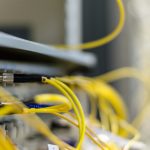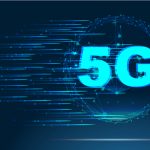
Fiber Optics Make 5G Possible
The day will come when 5G is the communication standard. It will be fully deployed. It will be a mature technology. On that day, the world will be a very different place. You will discover:
- A wireless world! The coaxial and fiber broadband providers no longer exist. Homes will no longer connect to the internet through a wired connection. All connections to the internet will be wireless. There will be no cords to cut. Internet customers will no longer feel mistreated by their Internet Service Providers.
- Cable TV will be replaced by streamed video content. The days of watching TV through rented converter boxes will be over. People will use 5G to stream paid video content. Competition for streaming customers should keep prices low. The streaming industry of today is not yet mature, but the demise of cable TV will help to change that. Streaming will be the new normal.
- Society finding ways to safely dispose of old cable wire and equipment. There are many millions of miles of cable in homes, on utility poles, and underground. Disposing of them will be a big issue. Most of these cables will be coaxial and the age of coaxial cables will be over. There will be a strong 5G-driven demand for additional fiber capacity.
Fiber Optic Cables Are the Key to the 5G Ground Game
Compared to fiber optic cables, coaxial cables are big and bulky. To match the number of fibers that go through a small conduit, coaxial cables would need a conduit the size of a doorway. The reason coaxial cable is so popular is that it is inexpensive and easy to use.
Optical fiber is superior to coaxial and other copper-based cables. The main advantages of fiber over copper are:
- Much higher bandwidth
- Longer transmission distance
- Smaller cross-sectional size
- Greater immunity to electromagnetic interference
These features make fiber the perfect choice for the tower-to-network portion of a telecommunications architecture.
5G Communications Require Greater Tower Bandwidth
Cell phone antennas are everywhere. You have seen them bristling on towers. Occasionally you will see one on a church steeple or tall building. If you look carefully, you may even see them blend in on a tree-shaped cell tower.
What you don’t see is the specifications that define the tower’s capacity. You don’t see:
- The number of concurrent connections the tower can handle.
- The size of the geographical area serviced by the tower.
- The maximum bandwidth of the copper and fiber connections to the network.
Today, these towers are set up to handle cell phones and data. The bandwidth of the tower-to-network connection will accommodate the current demand.
Towers that support 5G may permit individual end user data rates of up to 10 GPS. This represents a huge increase over the data rates that end users experience today. However, the network capacity between the tower and the user means nothing if the external network cannot service the tower at greater bandwidths.
The only solution to the 5G bandwidth problem is to bring additional optical fibers online between the tower and the network. This will increase the demand for fiber optic cables, and support equipment and installation services.
Check out our last post: Fiber Optic Communication Solutions





No Comments